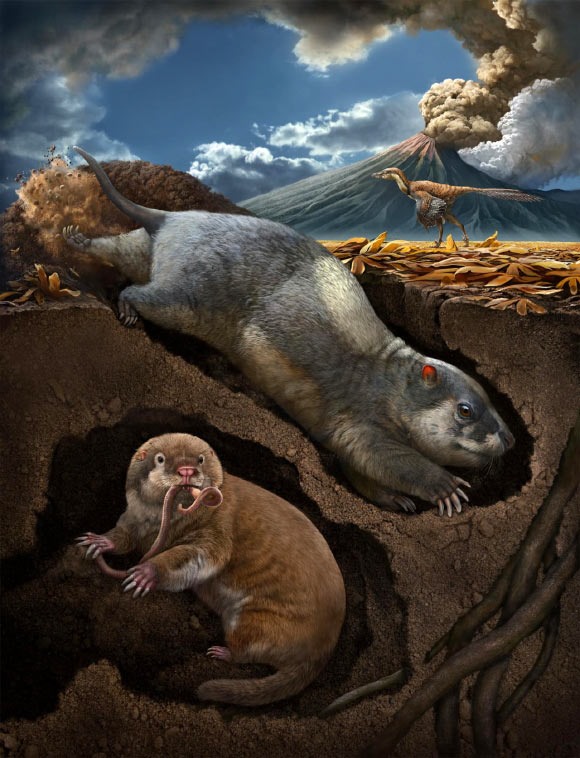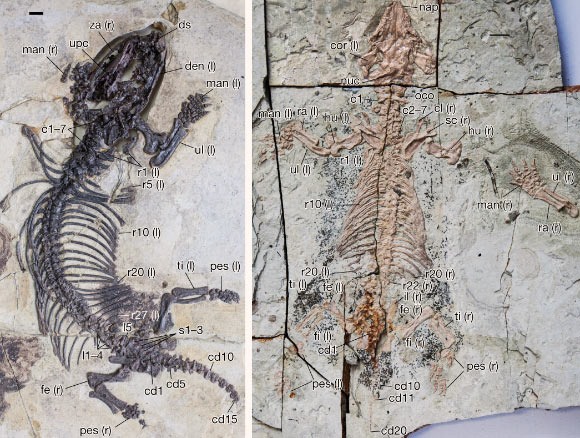Scientists have discovered fossils of two new species of burrowing animals that lived in northeastern China , 120 million years ago.
According to Science News, the fossils , named Fossiomanus sinensis and Jueconodon cheni, represent two species of mammals that lived about 120 million years ago (Early Cretaceous).

Jueconodon cheni belongs to the species eutriconodontan – a distant relative of modern marsupials and marsupials – about 17.8 cm long.
Fossiomanus sinensis belongs to a species of herbivorous mammal called Tritylodontid, their length is up to 31.6 cm. Fossiomanus sinensis was also the first herbivorous mammal to be discovered in the Jehol flora.

Dr Jin Meng, of the American Museum of Natural History, and colleagues said: “The Jehol biota during the Early Cretaceous has produced many well-preserved fossils, which provide a wealth of valuable information about the shape of the fossil record. morphology and evolution of early mammals”.
“These two new species expand the diversity of mammal populations. At the same time, their fossils also provide an opportunity for researchers to learn more about the biology (such as the development of the axial skeleton) of these extinct forms “- Dr Jin Meng emphasized.
Mammals adapted to burrowing have specialized features for doing this. Dr. Meng and co-authors found several striking features – such as short limbs and tail, and strong and muscular forelimbs – in both Fossiomanus sinensis and Jueconodon cheni.
In particular, these features indicate a type of digging behavior called “scraping”, which is performed mainly with the claws of the forelimbs.
“There are many theories about why animals dig deep into the soil and live underground,” said Dr. Meng. To protect themselves from predators, to maintain a relatively constant temperature, or to find food sources such as insects and plant roots.”
Fossiomanus sinensis and Jueconodon cheni also share another unusual feature: a long vertebral column. Normally, mammals have 26 vertebrae from neck to hip. However, Fossiomanus sinensis has 38 vertebrae, while Jueconodon cheni has 28.
To determine what makes these animals have longer vertebrae than others, paleontologists have studied their development biology. They found this variation could be due to mutations in the gene that determines the number and shape of vertebrae during early animal embryonic development.
“These fossils shed light on the evolution of the axial skeleton in mammals, which has been the focus of much research into vertebrate biology and evolution,” he said. The findings on Fossiomanus sinensis and Jueconodon cheni were published in the journal Nature.





